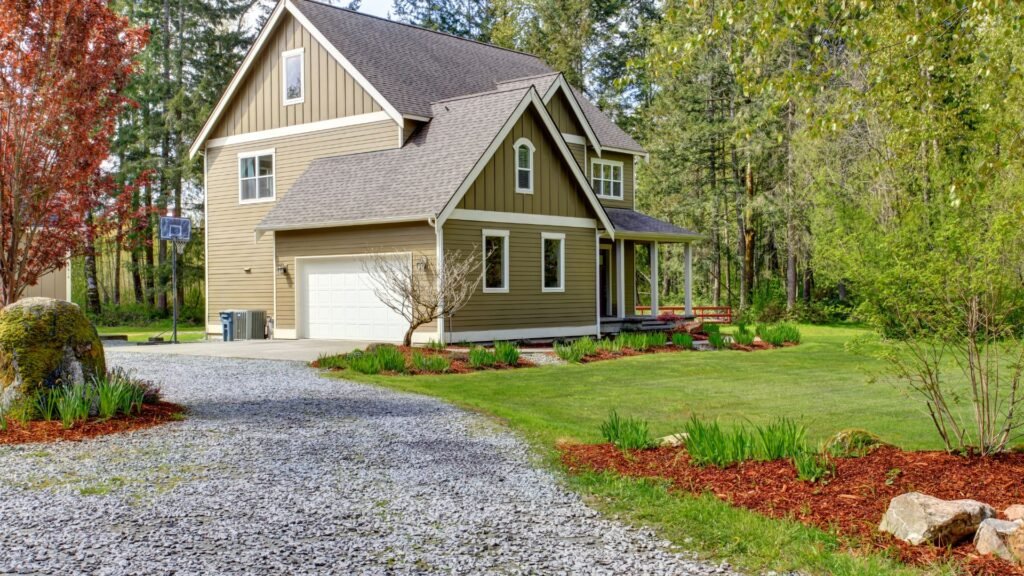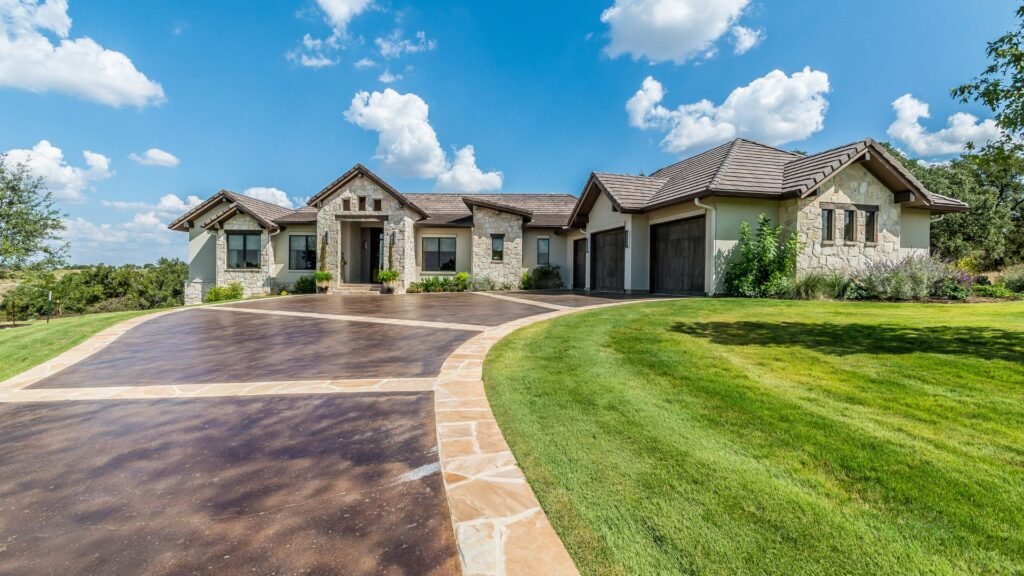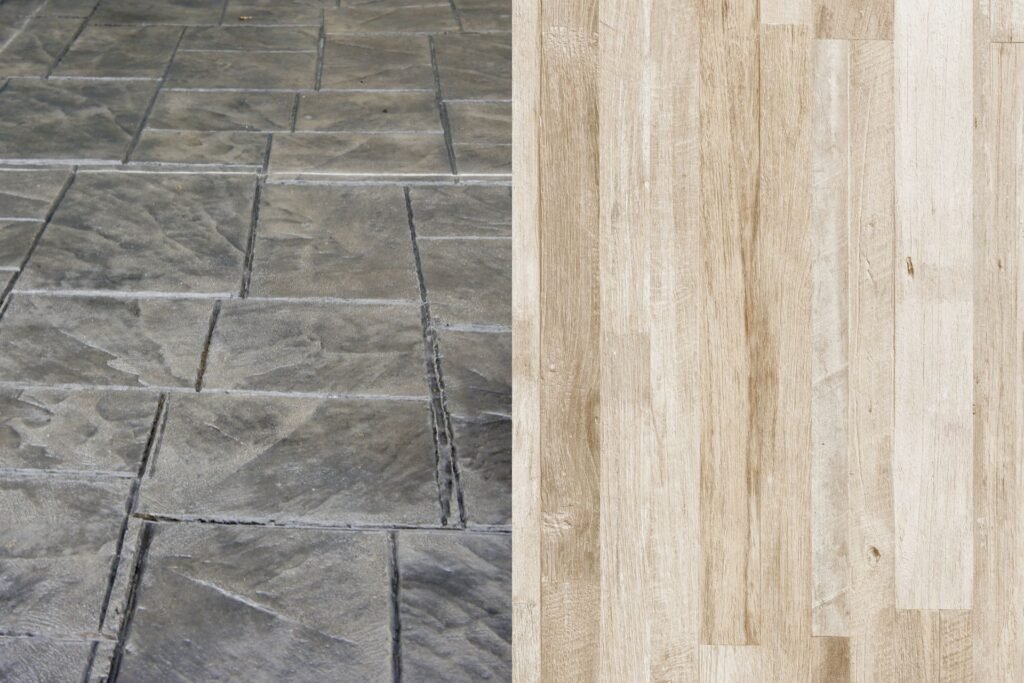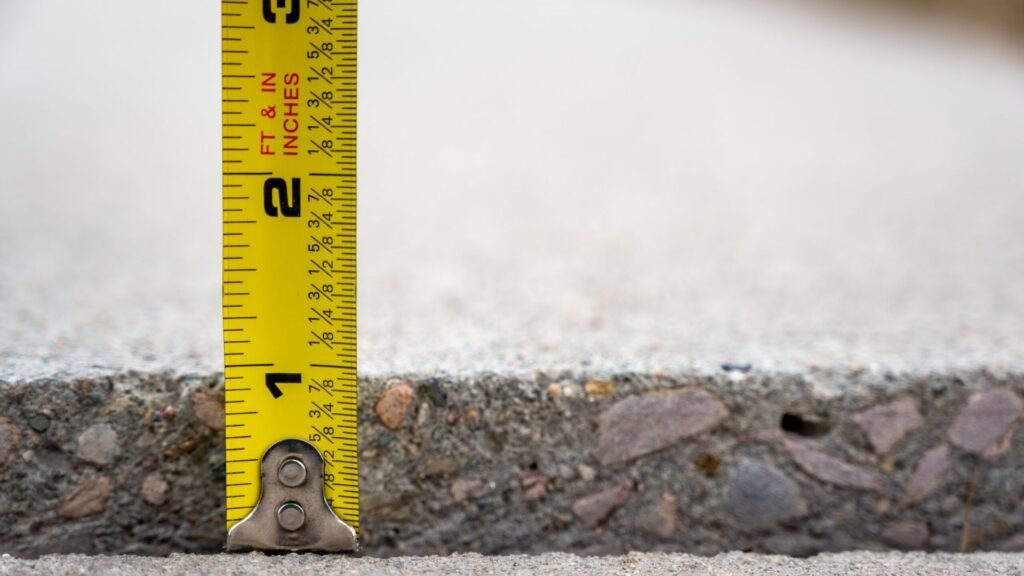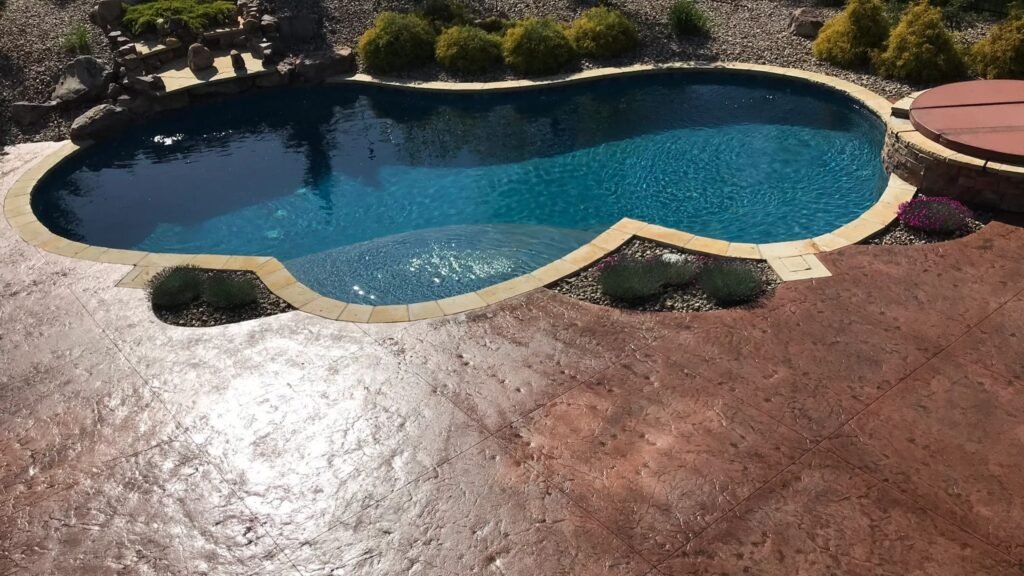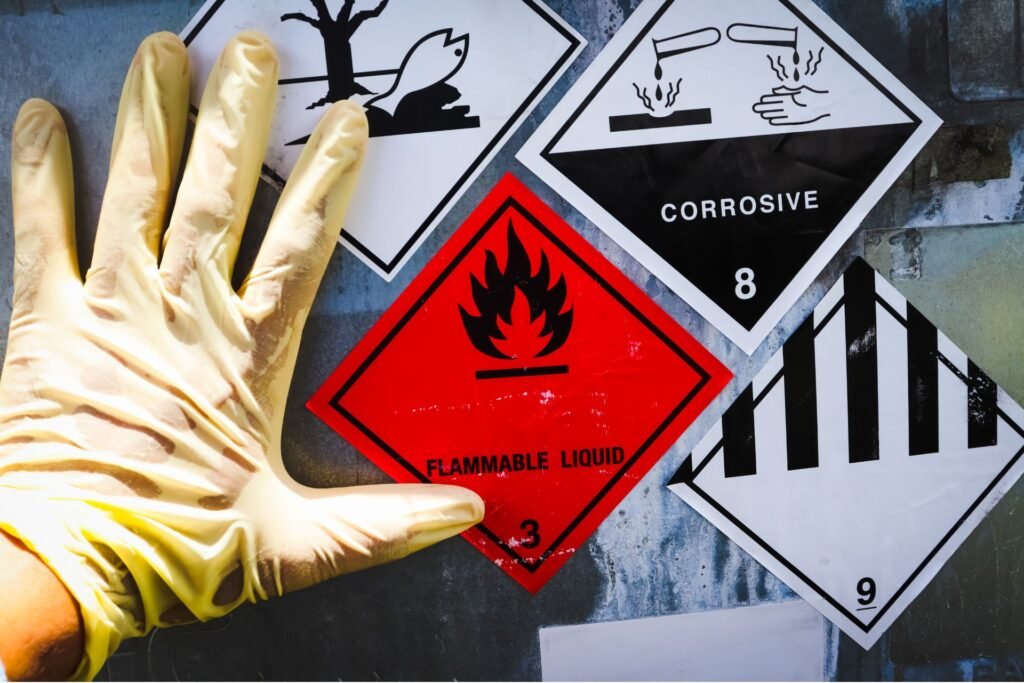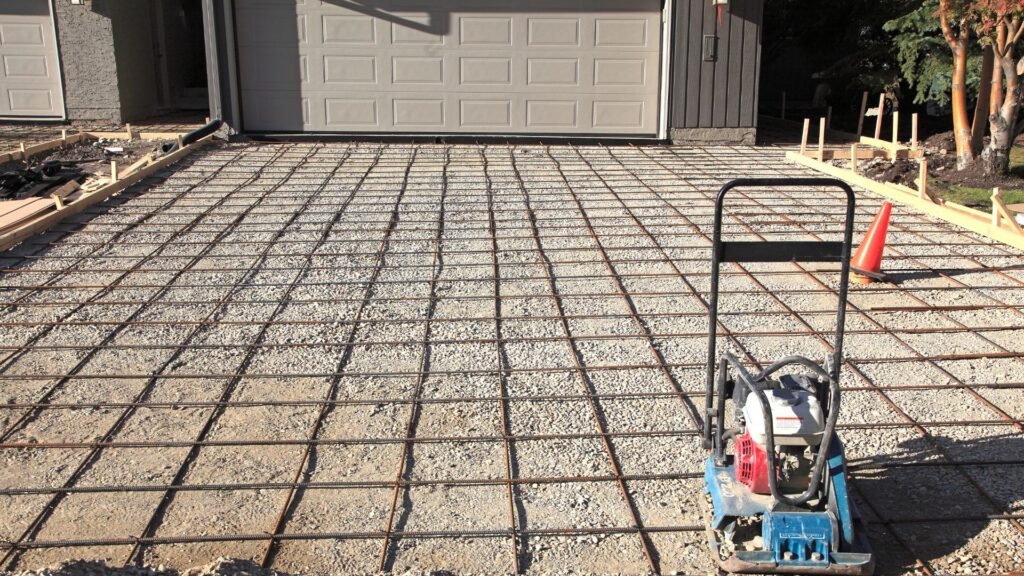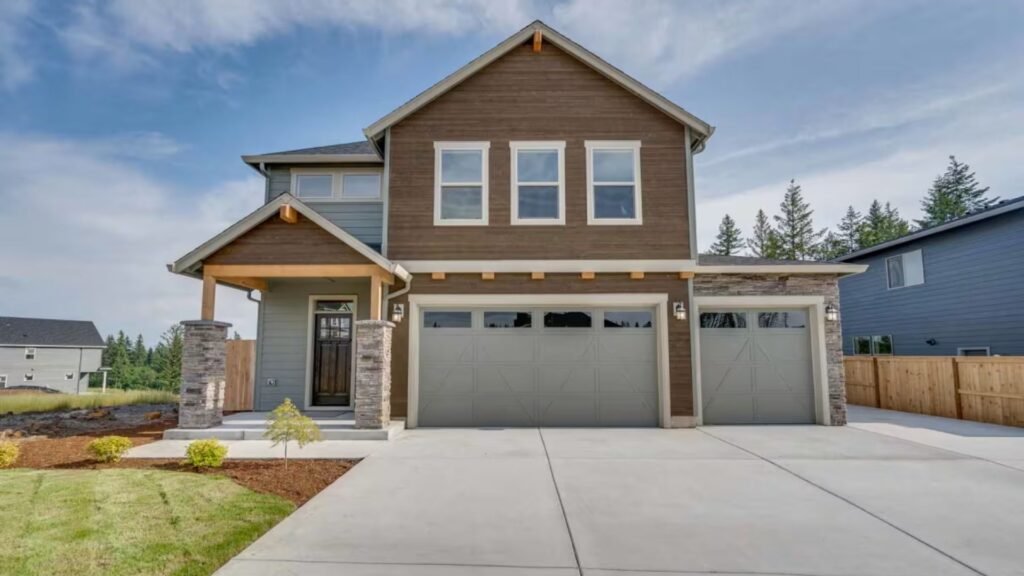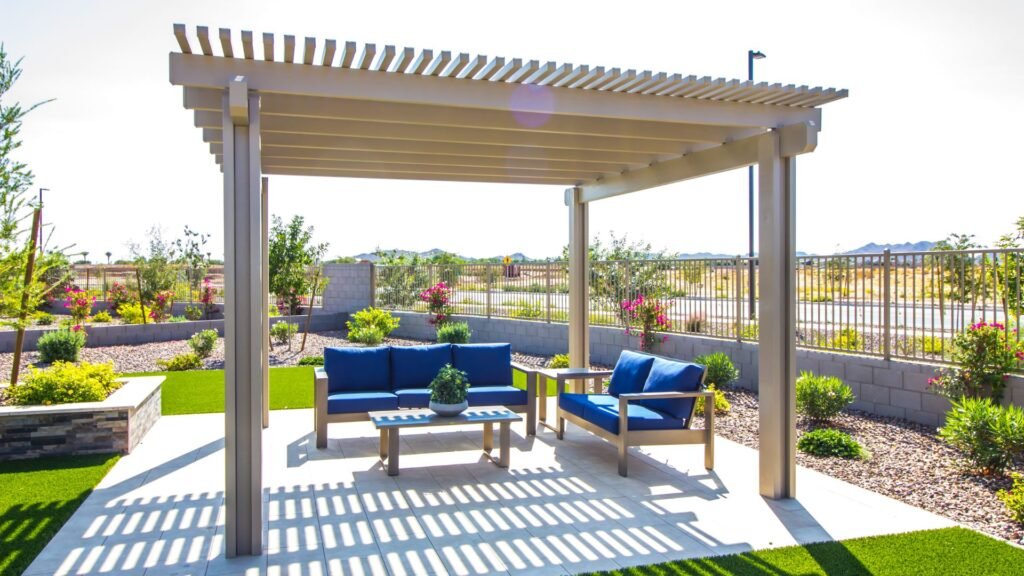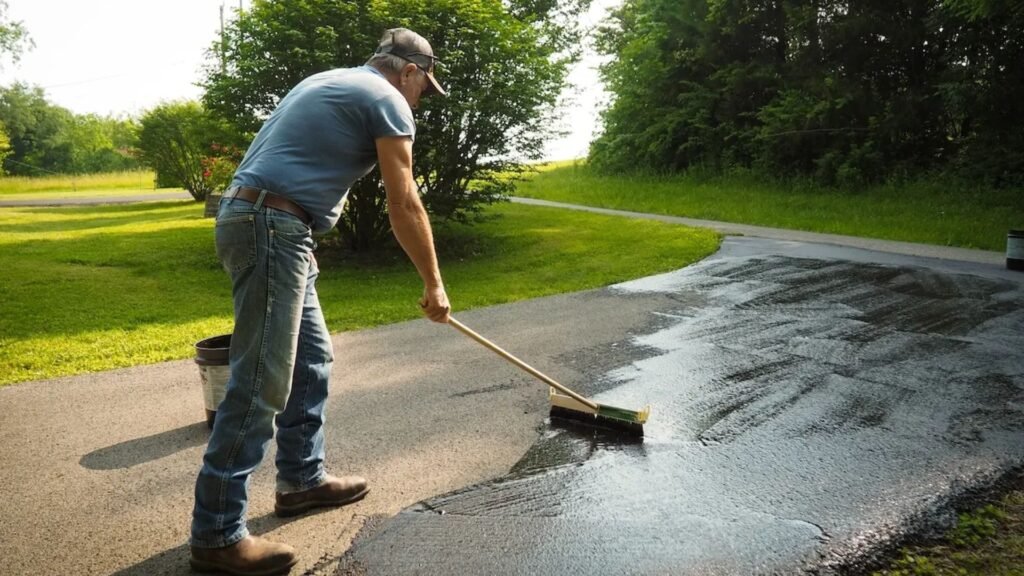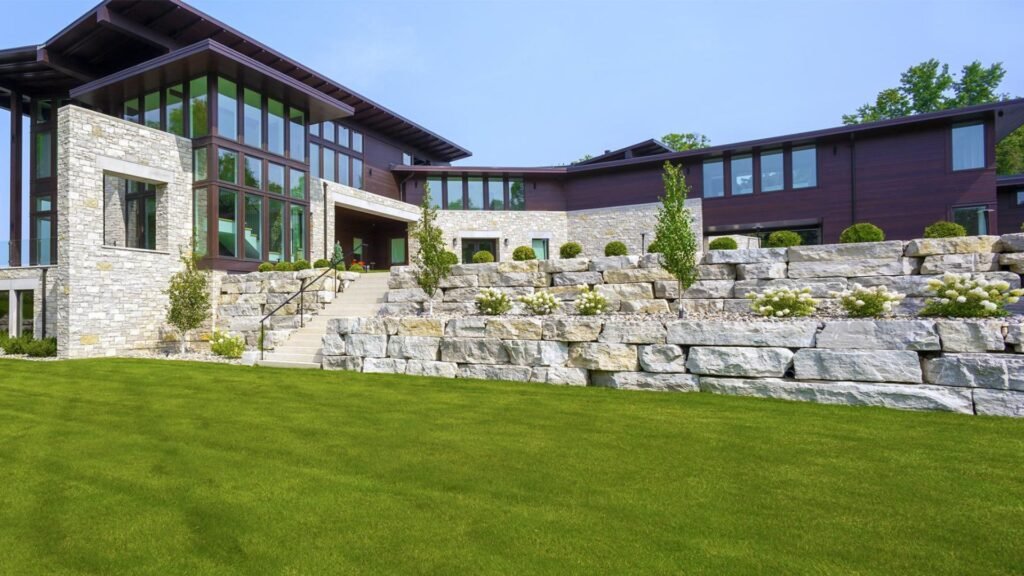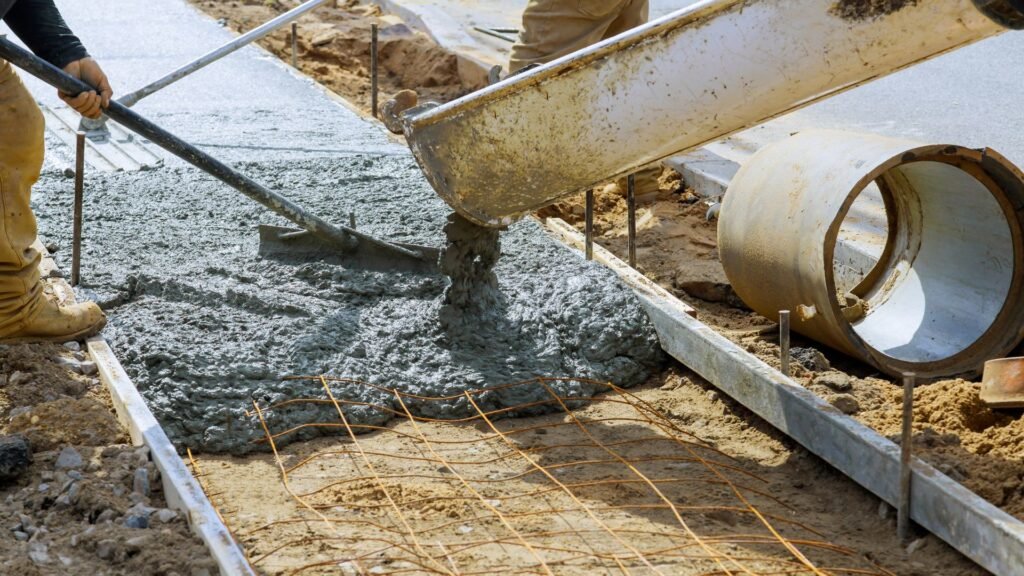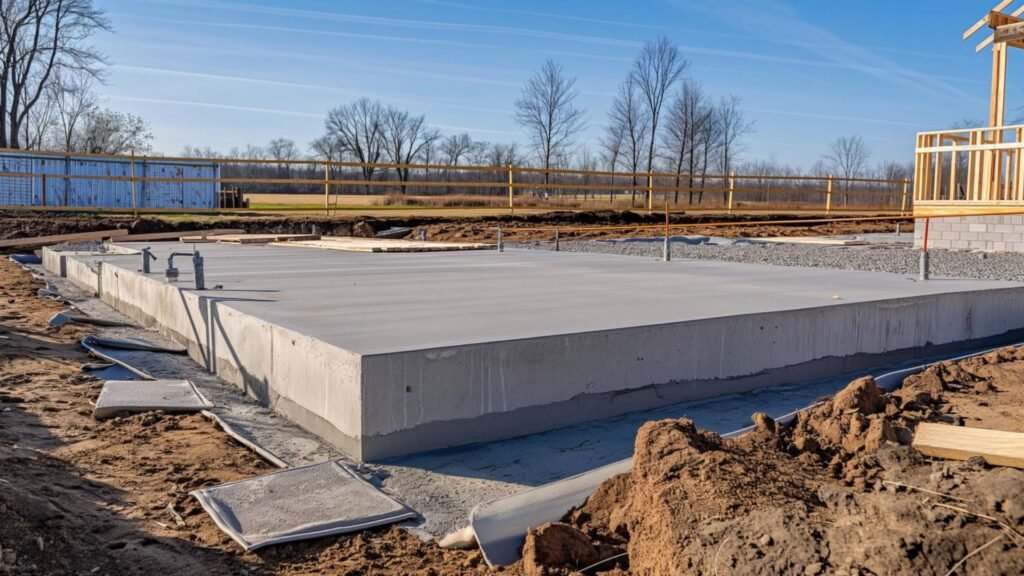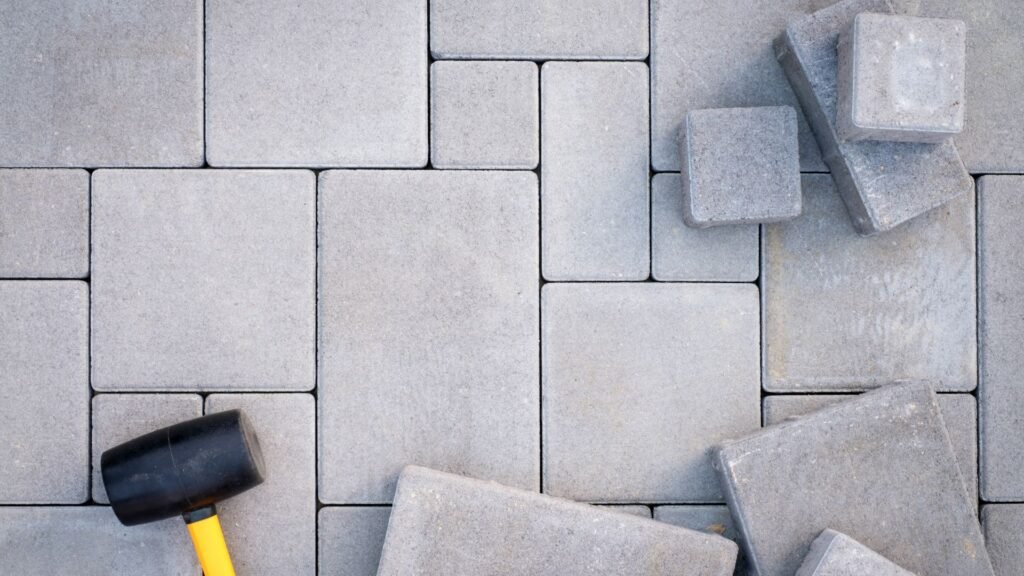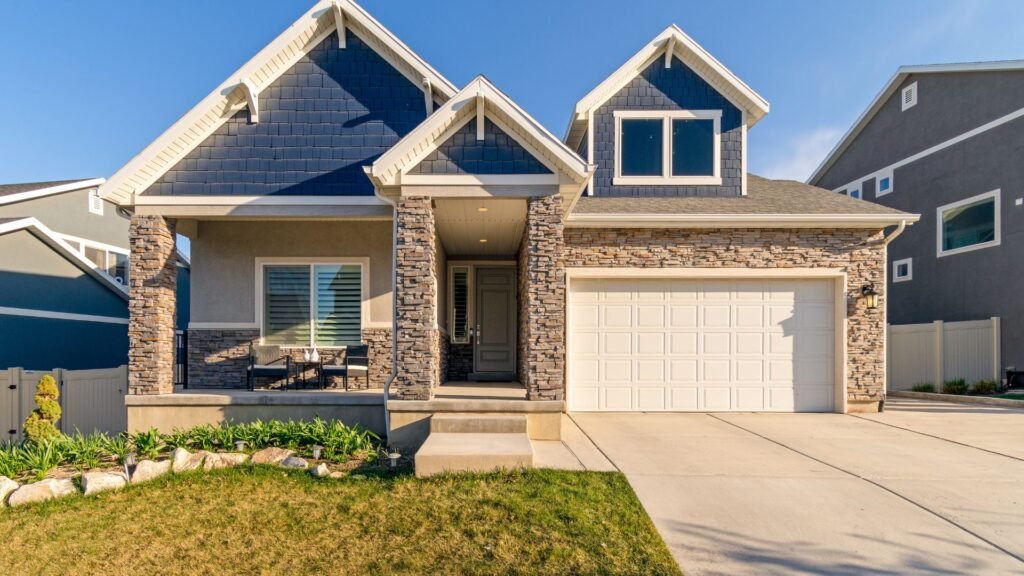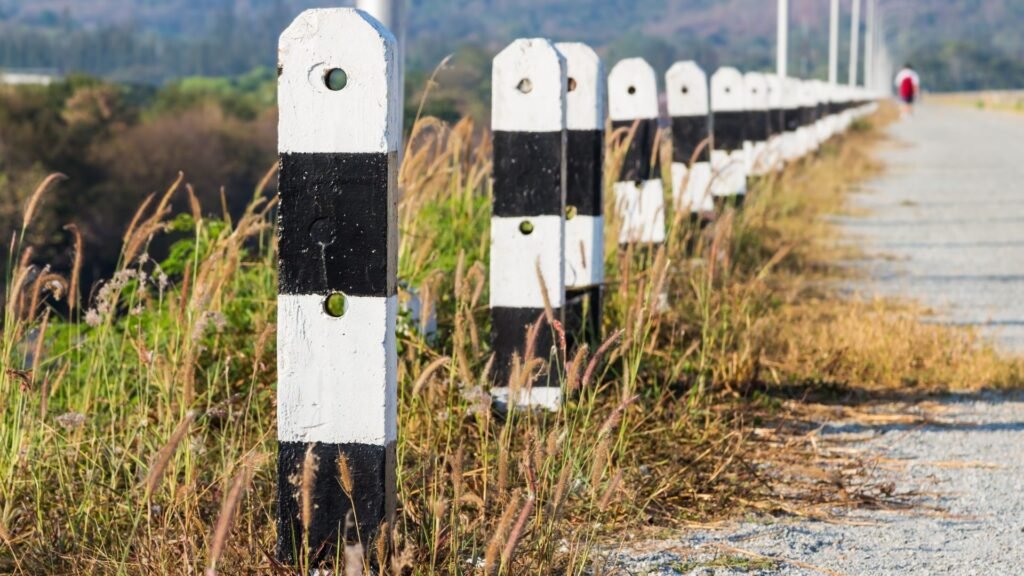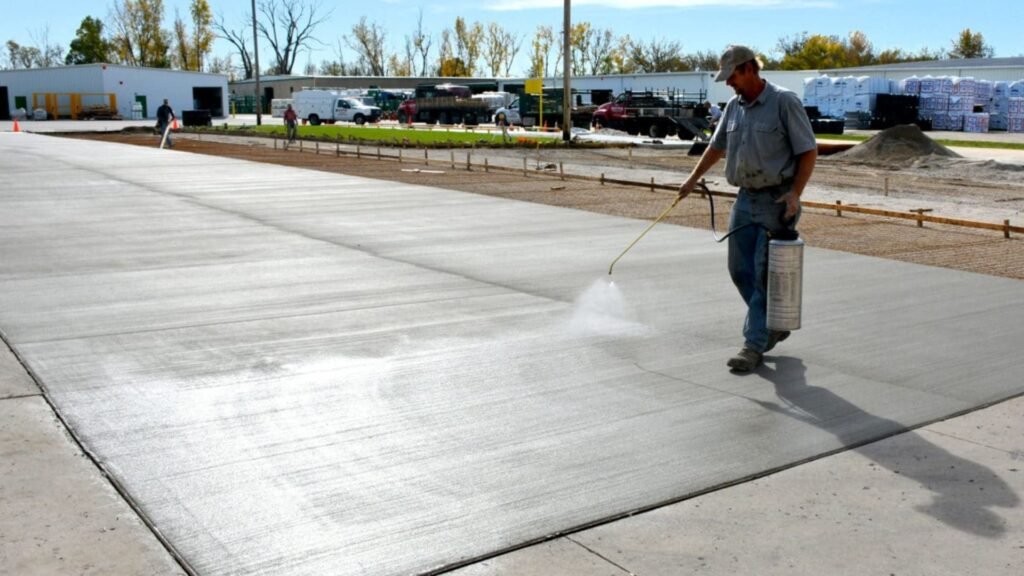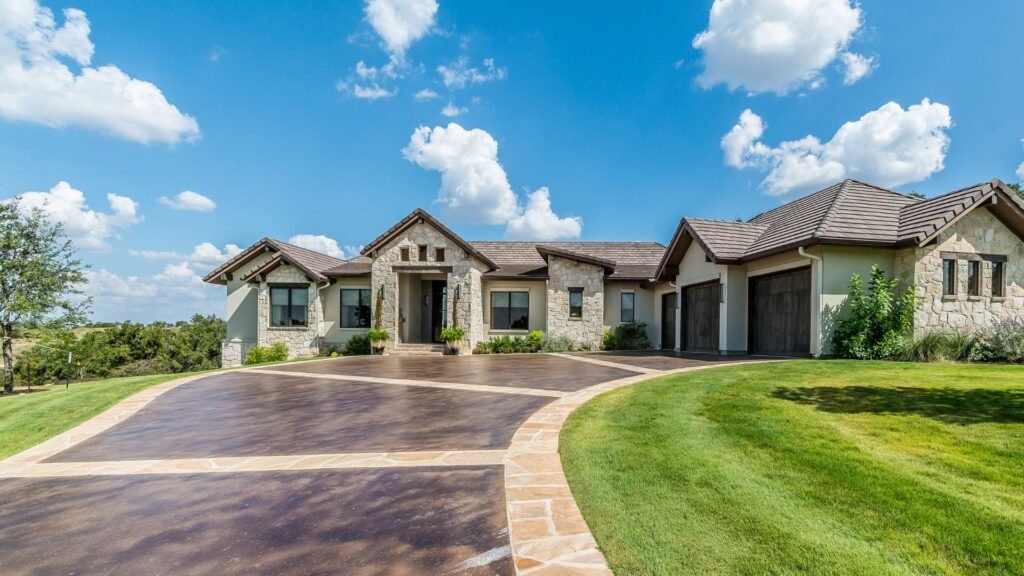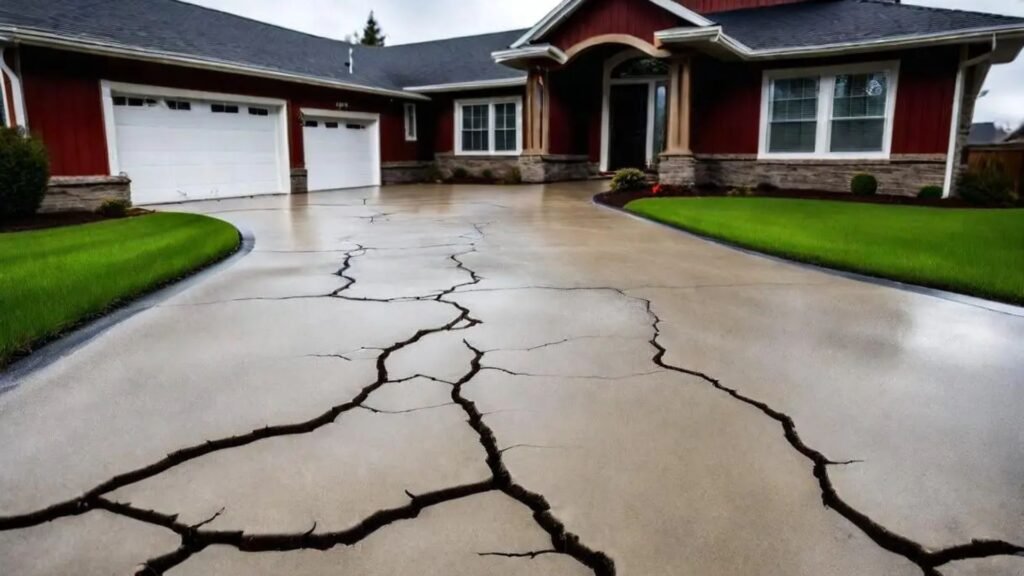Welcome to Gravel Driveway Maintenance: The Ultimate Guide for a Durable and Smooth Driveway. If your gravel driveway is starting to look more like a bumpy, uneven trail than the smooth, functional surface you desire, then you’ve come to the right place. Maintaining a gravel driveway can be a straightforward process that extends its lifespan, improves curb appeal, and ensures smooth driving. In this guide, we’ll cover everything you need to know about taking care of your gravel driveway, from fixing potholes and preventing erosion to controlling weeds and maintaining proper drainage. Whether you’re a seasoned DIYer or new to driveway maintenance, this comprehensive guide will help you keep your driveway looking great and performing its best all year round.
To maintain a gravel driveway, regularly inspect for potholes, ruts, and erosion. Fill any low spots with fresh gravel and compact the area to prevent further damage. Grade the surface to ensure proper water drainage, preventing washouts. Control weed growth using natural herbicides or a weed barrier beneath the gravel. Replenish gravel every 1-3 years to keep the surface level and stable. Edge restraints can help keep the gravel contained. Regular upkeep not only extends the life of your driveway but also enhances its appearance and functionality.
Table of Contents
Why Gravel Driveways Are Popular
Gravel driveways have become a favored option for homeowners due to their affordability, durability, and aesthetic appeal. Let’s explore why so many people opt for gravel over other materials like asphalt or concrete.
Low Cost and Affordability
One of the primary reasons people choose gravel driveways is their cost-effectiveness. Compared to asphalt or concrete, installing a gravel driveway is far more budget-friendly. Concrete and asphalt can be costly due to the materials, labor, and installation process, which often require specialized equipment and expertise. In contrast, gravel driveways can be laid with minimal professional help, and the raw materials are inexpensive. This makes gravel an ideal option for homeowners looking to cut costs without compromising on functionality. Additionally, if you’re working with a large area, the price difference can be even more significant, saving you thousands of dollars.
Durability with Proper Maintenance
While gravel driveways are more affordable, they don’t compromise on durability. With proper maintenance, a gravel driveway can last for decades. Regular upkeep, such as replenishing the gravel every few years and managing weeds or potholes, ensures that the driveway remains in excellent condition. Unlike concrete, which can crack under pressure, or asphalt, which may develop ruts, gravel has a natural flexibility that allows it to withstand the freeze-thaw cycles of varying weather conditions. This adaptability to weather changes makes it a practical long-term choice for regions that experience significant seasonal fluctuations.
Aesthetic Appeal
Gravel driveways also score high in terms of visual appeal. Their natural, rustic look enhances the overall appearance of a property, particularly in rural or suburban settings. Gravel comes in various colors and textures, allowing homeowners to customize the look to suit their landscaping and home style. Whether you’re aiming for a classic country feel or a more modern, minimalist aesthetic, gravel provides a versatile option that complements a wide range of architectural styles. It adds a charming, earthy quality to outdoor spaces, boosting curb appeal without the need for overly expensive materials.
Gravel driveways are a popular choice for homeowners due to their affordability, durability with proper maintenance, and the natural beauty they bring to a property. Whether you’re on a budget or seeking a driveway option that blends seamlessly with your home’s aesthetic, gravel offers a practical and visually pleasing solution.

Common Issues With Gravel Driveways
Gravel driveways are a popular choice for many homeowners due to their affordability and rustic charm. However, like any outdoor surface, gravel driveways can experience a range of common problems that affect both their functionality and appearance. Below, we’ll cover some of the most common issues, including ruts and potholes, weed growth, gravel erosion, and dust problems, along with tips on how to address them effectively.
Ruts and Potholes
Ruts and potholes are among the most frequent issues that affect gravel driveways. Over time, consistent traffic from cars, trucks, or even bicycles can compact the gravel in certain areas. This compaction creates low spots that eventually turn into ruts. The more traffic a driveway sees, the deeper and more noticeable these ruts become. Additionally, when rainwater fills these low spots, it can accelerate the erosion process, forming potholes.
Potholes are not just an eyesore; they can also pose a danger to vehicles, potentially causing tire damage or alignment issues. To prevent or fix ruts and potholes, it’s important to regularly maintain the surface by redistributing gravel and filling in any low spots. Compacting the gravel properly and ensuring the surface has good drainage will also help reduce the likelihood of future damage.
Weed Growth
Weeds are another common problem in gravel driveways. Even though gravel is supposed to prevent weed growth by acting as a physical barrier, weeds often find their way through the cracks and spaces between the stones. Weeds thrive in gravel driveways due to exposure to sunlight and the presence of dirt that gets mixed in with the gravel over time. This dirt provides the perfect environment for weeds to take root and grow.
If left unchecked, weeds can quickly overrun a gravel driveway, making it look unkempt and neglected. In addition to being unsightly, weed growth can destabilize the gravel and make the driveway less sturdy. To manage this issue, homeowners should consider using landscape fabric beneath the gravel when installing a driveway. Regularly applying weed-killing products or manually pulling weeds can also help keep them in check.
Gravel Erosion and Washout
Gravel erosion and washout are other common issues, especially in regions that experience heavy rainfall. Rainwater and runoff can wash away the gravel, particularly if the driveway is not properly graded or lacks adequate drainage. When this happens, the surface becomes uneven, with patches of bare ground exposed.
The constant movement of water across the driveway can also contribute to the formation of channels or grooves in the gravel, worsening the erosion problem. To combat this, proper grading and the installation of drainage systems such as French drains or culverts can help redirect water away from the driveway. Replenishing gravel periodically and ensuring a sloped surface for runoff to flow naturally can also minimize washout.
Dust Problems
Dust is another common issue with gravel driveways, especially in dry or arid climates. When vehicles drive over a gravel surface, tiny particles of dust are kicked up into the air. This can be particularly problematic during dry seasons when there is little moisture in the air to hold the dust down. Excessive dust can be a nuisance, not only dirtying vehicles and nearby structures but also affecting air quality for those living nearby.
To reduce dust, homeowners can apply dust suppressants like calcium chloride or water to the gravel surface. Another option is to install a layer of crushed stone or recycled asphalt, which helps bind the gravel together and prevents fine particles from becoming airborne. Regular maintenance, including keeping the surface level and free from loose debris, can also help reduce the dust problem.
While gravel driveways are an affordable and aesthetically pleasing option, they do come with a set of maintenance challenges. Ruts and potholes, weed growth, gravel erosion, and dust are all common problems that can affect both the appearance and functionality of your driveway. However, with regular upkeep, such as leveling the surface, managing weed growth, and addressing drainage issues, homeowners can keep their gravel driveways looking great and functioning properly for years to come.

Essential Tools And Materials For Maintaining A Gravel Driveway
Maintaining a gravel driveway can be a manageable and rewarding task, especially when you have the right tools and materials at your disposal. Whether you’re dealing with uneven surfaces, spreading gravel, or combating weeds, using the right equipment ensures your driveway stays in great condition for years to come. In this section, we’ll dive into the essential tools and materials needed to properly care for a gravel driveway.
Shovel and Rake
One of the simplest yet most effective combinations of tools you’ll need is a shovel and rake. These basic tools are essential when it comes to spreading gravel evenly across the surface of your driveway. A shovel helps you redistribute gravel from high spots or new piles that may accumulate in certain areas. It’s especially useful for filling in low spots or areas where the gravel has washed away.
Once the gravel is where it needs to be, a sturdy rake will help you level it out, ensuring the surface remains smooth and even. Rakes, especially those with wide, flat heads designed for gravel, make it easier to drag the stones into place, preventing the formation of ruts or depressions over time. Regular use of these tools ensures that your driveway remains functional and visually appealing.
Driveway Drag or Grader
For those looking to take driveway maintenance a step further, investing in a driveway drag or grader is a smart choice. Unlike shovels and rakes, which require manual labor, a driveway drag (which can be towed behind an ATV or tractor) smooths out uneven surfaces quickly and efficiently. This tool works by redistributing gravel evenly across the driveway, filling in potholes and ruts, and leaving a smooth, even surface.
Driveway graders are available in various sizes and designs, so it’s easy to find one that fits your needs. By using this tool a few times a year, you can save yourself the effort of manually leveling the gravel and ensure your driveway maintains its evenness and longevity. It’s particularly useful after periods of heavy rain, which can cause gravel to wash away or settle unevenly.
Gravel Refill
Over time, gravel will inevitably get displaced, either by rain, snow, or the simple wear and tear of vehicles driving over it. This is why periodic gravel refills are necessary to maintain the integrity and appearance of your driveway. When it’s time for a refill, it’s important to choose the right type of gravel for your specific needs.
For most driveways, crushed stone or pea gravel works well, but it’s worth considering factors like climate, soil composition, and vehicle traffic. Larger, angular stones are less likely to shift under the weight of vehicles, making them ideal for high-traffic areas. A mix of different sizes of gravel can also provide better drainage and reduce the chances of ruts forming. By keeping an eye on how much gravel your driveway loses over time, you’ll know when it’s time to add more.
Weed Control Solutions
Weeds can be a persistent problem on gravel driveways, but with the right approach, you can keep them in check. Common weed control solutions include using weed barriers or landscape fabric, both of which are laid underneath the gravel to prevent weeds from taking root. These barriers allow water to drain but block sunlight from reaching the soil, effectively stopping weed growth.
Alternatively, natural herbicides or salt-based solutions can be applied to kill any weeds that do manage to break through. Regular application of these treatments ensures that your driveway remains weed-free without the need for harsh chemicals. If you prefer an environmentally-friendly approach, vinegar or boiling water are simple, natural options that can help control weeds in a more sustainable way.
Edge Restraints
One common issue with gravel driveways is the tendency for gravel to spill out beyond the edges, creating a messy and uncontained look. To prevent this, edge restraints are a useful addition. These restraints act as a boundary for the gravel, keeping it within the designated area and preventing it from spilling onto your lawn or garden.
Edge restraints can be made from a variety of materials, including stone, wood, or metal. Some homeowners choose to install stone pavers or concrete curbs along the edges for a more finished, decorative look. Others may opt for plastic or metal edging strips, which are easier to install and can be staked into the ground for a more discreet boundary. Not only do edge restraints improve the appearance of your driveway, but they also help maintain its structure and reduce the amount of gravel you’ll need to replace over time.
With the right tools and materials, maintaining a gravel driveway can be relatively straightforward. From basic tools like shovels and rakes to more advanced options like driveway drags and weed barriers, these items ensure your driveway stays level, weed-free, and well-contained. Regular upkeep, such as periodic gravel refills and edging, will go a long way in keeping your driveway functional and attractive. By investing in the right tools now, you’ll save yourself time and effort down the road.

Step-By-Step Guide To Gravel Driveway Maintenance
A gravel driveway offers a functional and aesthetically pleasing entrance to your property. However, keeping it in top condition requires consistent maintenance. This guide will walk you through key steps to ensure your driveway remains smooth, durable, and free from common problems such as potholes, ruts, and weed growth.
Inspect Your Driveway Regularly
Regular inspections are crucial for the long-term health of your gravel driveway. Early detection of issues, such as potholes, ruts, or drainage problems, can save you from costly repairs in the future. Walk your driveway periodically and keep an eye out for loose gravel, areas that look uneven, or places where water pools. By catching these problems early, you can address them before they escalate into larger, more expensive issues.
Fill and Repair Potholes and Ruts
Potholes and ruts are inevitable with gravel driveways, but timely repairs can prevent them from worsening. Here’s a step-by-step process for fixing them.
- Start by removing any debris, loose gravel, or dirt from the pothole or rut.
- Fill the hole with fresh gravel, packing it tightly. For deeper potholes, add gravel in layers and compact each layer thoroughly.
- Once the hole is filled, level the area with a rake and ensure it’s smooth.
- Compact the area again to ensure that the gravel is firmly in place. This step is critical because a well-compacted area will be more durable and resist further deterioration.
Regrade and Smooth Out the Surface
Over time, gravel can shift, causing an uneven surface or ridges to form. Regrading helps to redistribute the gravel evenly across the driveway. You can use a rake, shovel, or driveway drag for this task.
- Create a slight crown in the middle of the driveway. This gentle slope will help water run off to the sides rather than pooling in the middle, preventing damage caused by water accumulation.
- Ensure the gravel is evenly spread, especially in areas that receive the most traffic. Uneven gravel can lead to premature wear and tear.
Control Weeds and Grass Growth
Weed and grass growth can weaken the structure of your gravel driveway and make it look unkempt. Here are the ways to manage this.
- Natural Methods: You can use natural options like vinegar or salt to kill weeds without the use of chemicals.
- Chemical Methods: Herbicides can also be effective for large-scale weed control. To prevent weed growth from the start, consider installing a layer of landscape fabric beneath the gravel. This barrier can effectively block weeds while allowing water to pass through, aiding drainage. Regular maintenance, such as raking and replenishing gravel, will also help keep weeds at bay by discouraging their growth.
Improve Drainage Systems
Good drainage is essential for maintaining the longevity of your gravel driveway. Without proper drainage, water can accumulate, causing washouts or significant damage over time. Here are some key steps to ensure efficient drainage.
- Assess where water tends to pool or run off during heavy rains.
- Install a French drain or culvert to direct water away from the driveway. These systems allow water to flow through designated channels, preventing it from eroding your gravel or creating ruts.
- Dig small ditches along the sides of your driveway if necessary to guide water away from the surface. A well-drained driveway is more resistant to weather damage and lasts much longer.
Replenish Gravel
Over time, gravel compacts and gets washed away, so replenishing your gravel driveway is necessary to maintain its structure and appearance. Here are some signs your driveway needs more gravel.
- Loose or Exposed Dirt: If you notice patches of dirt where the gravel has thinned out, it’s time to add more.
- Erosion or Uneven Surface: Gravel can get washed away by rain or displaced by vehicle traffic, leading to low spots. When replenishing, choose the right type of gravel. For most driveways, a mix of crushed stone and gravel works best, as it compacts well and provides stability. Spread new gravel evenly across the surface, adding a layer that’s thick enough to cover bare spots but not so thick that it disrupts drainage. Compact the new layer to ensure it stays in place.
Maintaining your gravel driveway doesn’t have to be difficult if you stay on top of the necessary tasks. Regular inspections, timely pothole repairs, regrading, weed control, and proper drainage are all vital steps to keep your driveway in great condition. By following these maintenance practices, you can ensure that your gravel driveway remains functional, attractive, and long-lasting.

Preventive Maintenance Tips For Long-Term Success
Maintaining a gravel driveway is essential for keeping it in top shape and ensuring its longevity. By following a few preventive maintenance steps, you can avoid costly repairs and keep your driveway looking great for years to come. Below are some expert tips to help you maintain your gravel driveway effectively.
Create a Regular Maintenance Schedule
One of the most important things you can do for your gravel driveway is to create a consistent maintenance schedule. We recommend inspecting your driveway at least once every season to catch any minor issues before they become major problems. By taking the time to walk along your driveway and check for uneven surfaces, potholes, or displaced gravel, you can address these areas promptly. Regular raking or grading will help redistribute the gravel, filling in low spots and keeping the surface even. This proactive approach saves you from bigger fixes down the road and ensures your driveway remains safe and visually appealing.
Preparing for Winter and Rainy Seasons
Different seasons bring unique challenges for gravel driveways, so preparing in advance can help you avoid damage caused by harsh weather conditions.
- Winter Preparation: Before the cold sets in, take time to level the surface of your driveway. Snow and ice can exacerbate potholes and low spots, so ensure your driveway is as even as possible. If you live in an area prone to snow, consider applying a layer of fresh gravel to help with traction. Additionally, be cautious when plowing snow; raise the blade slightly to avoid displacing gravel and damaging the surface.
- Rainy Season Preparation: Rain is one of the most common causes of erosion in gravel driveways. To prepare for rainy months, ensure your driveway has proper drainage. This can be achieved by grading the surface slightly to encourage water to flow off the driveway rather than pooling in one area. Address any drainage issues before the rain arrives to prevent washouts and significant gravel displacement.
Preventing Erosion and Washouts
Erosion is a common issue for gravel driveways, especially in areas that experience heavy rainfall or runoff. Without proper care, your driveway can suffer from washouts, which create uneven surfaces and unsightly trenches. To combat this, installing an efficient drainage system is crucial.
Start by grading your driveway at a slight angle to guide water toward drainage ditches or channels along the edges. Adding gravel with varied sizes can also help prevent erosion, as larger stones at the bottom and smaller ones on top create a more stable surface. Consider installing culverts or French drains in areas prone to heavy runoff to manage water flow effectively. Proper drainage not only protects your gravel driveway but also reduces the risk of erosion, preserving your investment.
Using Edge Restraints
Gravel has a tendency to migrate over time, especially on sloped driveways or during periods of heavy use. One of the best ways to prevent this is by installing edge restraints. These barriers help contain the gravel within the boundaries of your driveway, keeping it from spreading into your yard or landscaping.
There are several materials you can use for edging, including wood, metal, and stone. Each has its benefits depending on the look and durability you desire. Wooden edging offers a rustic appearance, while metal provides a more durable and modern solution. Stone edging blends seamlessly into natural landscapes and is extremely long-lasting. Whatever material you choose, properly installed edging will help maintain the shape of your driveway, reduce gravel loss, and make future maintenance easier.
Taking a proactive approach to gravel driveway maintenance is key to ensuring its long-term success. By creating a regular maintenance schedule, preparing for seasonal weather challenges, preventing erosion, and using edge restraints, you can keep your driveway looking great and functioning well for years. Consistent attention to detail and small fixes along the way can help you avoid bigger issues, saving you both time and money in the long run. With these preventive maintenance tips, your gravel driveway will continue to serve you well, providing a durable and attractive entrance to your home.

When To Consider Professional Help For Your Driveway
Maintaining a driveway might seem straightforward, but some situations call for professional expertise. Knowing when to seek help is essential to avoid long-term issues that can cost more down the road. In this section, we’ll dive into the kinds of problems that require professional attention, the benefits of hiring a contractor, and how to select the right one.
Identifying Complex Driveway Issues
While many homeowners can manage minor repairs, some driveway problems are more complex and should not be overlooked. Here are some signs that you may need to call a contractor.
- Severe Erosion: Erosion can occur when water runs off improperly, leading to deep ruts or channels in your driveway. This can make it unsafe and unsightly. If left unaddressed, it can even lead to more significant damage to the surrounding landscape and your home’s foundation.
- Improper Drainage: Poor drainage can result in standing water, which weakens the structural integrity of your driveway. Over time, this can cause cracks, potholes, and other issues that make the surface unsafe and unattractive.
- Structural Issues: If you notice large cracks, sinking, or uneven surfaces, these could indicate underlying structural problems. These issues often go beyond simple surface repairs and require professional evaluation and intervention.
Recognizing these signs early can help you avoid costly repairs later on. If you notice any of these problems, it’s time to consider professional assistance.
The Benefits of Hiring Professional Services
Hiring a professional contractor can save you time, effort, and money in the long run.
- Specialized Equipment: Professionals have access to heavy-duty equipment that allows them to tackle more challenging jobs like regrading or reshaping your driveway. Whether it’s leveling the surface, improving drainage, or laying new materials, their tools and machinery are designed for efficiency and precision.
- Expertise: A professional contractor brings years of experience and technical knowledge. They can identify issues that you might not see and offer solutions tailored to your specific needs. Whether it’s choosing the right materials or ensuring proper water runoff, their expertise ensures that your driveway will last longer and remain in good condition.
- Long-term Savings: While hiring a contractor may seem costly upfront, it can save you money over time. Proper installation and repair reduce the likelihood of recurring issues, minimizing the need for frequent repairs or complete replacements.
- Warranty and Peace of Mind: Most reputable contractors offer warranties for their work, giving you added peace of mind that the job will be done right. This also provides reassurance that any issues that arise within the warranty period will be addressed without additional cost.
How to Choose the Right Contractor
Choosing the right contractor for your driveway project is crucial. With so many options available, it can be overwhelming. Here are some tips to help you find a reliable professional.
- Check Reviews and Testimonials: Start by reading reviews from previous customers. Platforms like Google, Yelp, and the Better Business Bureau can offer valuable insights into a contractor’s reputation. Look for consistently positive reviews and note any recurring complaints.
- Verify Certifications and Licenses: Make sure the contractor holds the necessary licenses and certifications required by your state or local government. These certifications ensure that the contractor adheres to industry standards and regulations.
- Ask for References: A trustworthy contractor should be willing to provide references from past clients. Speaking directly to these references can give you a better understanding of the contractor’s work quality, reliability, and professionalism.
- Get Multiple Quotes: It’s always a good idea to request quotes from several contractors before making your decision. This allows you to compare prices, services, and timelines. Remember, the cheapest option is not always the best – consider the quality of work as well.
- Inquire About Insurance: Ensure that the contractor has liability insurance and worker’s compensation. This protects you from potential legal and financial issues if accidents happen during the project.
- Request a Detailed Contract: Before starting any work, ask for a written contract outlining the project scope, materials to be used, costs, and timelines. A clear, detailed contract helps avoid misunderstandings and ensures that both parties are on the same page.
By following these steps, you’ll be well on your way to finding a contractor who can deliver high-quality results for your driveway. Knowing when to bring in a professional for your driveway can make all the difference in maintaining its durability and appearance. Severe erosion, improper drainage, and structural issues are clear signs that expert help is needed. Professional contractors offer the right tools, experience, and long-term solutions, saving you time and money. By carefully selecting a reliable contractor using the tips above, you can ensure that your driveway will be properly cared for and built to last.

DIY Or Hire A Pro
When it comes to maintaining your gravel driveway, you have two primary options: doing it yourself (DIY) or hiring a professional. Each option has its pros and cons, and the best choice for you depends on several factors like cost, skill level, and time availability. In this section, we’ll explore the differences to help you make an informed decision.
DIY vs. Hiring a Pro
One of the most significant factors when deciding between DIY and hiring a professional is cost. For many homeowners, saving money is a top priority, and doing the work yourself can seem like the cheaper route. Let’s break down the costs involved in both options.
DIY Costs
- Materials: If you’re maintaining a gravel driveway, the most frequent material cost will be the gravel itself, which ranges from $20 to $60 per ton, depending on the type and quality.
- Tools and Equipment: You may need to purchase or rent tools like a gravel rake, shovel, and possibly even a power grader or compactor. Renting heavy machinery like a power grader can cost anywhere from $100 to $300 per day.
- Additional Expenses: Other potential costs might include weed control products, edge reinforcements, or landscape fabric to prevent gravel displacement.
Hiring a Professional
When you hire a professional, you’ll be paying for both labor and materials. A contractor’s fee will typically include.
- Materials: Gravel costs are similar, but professionals may have access to better rates through suppliers.
- Labor Costs: On average, professional driveway maintenance services cost between $500 and $1,500, depending on the size of your driveway and the amount of work required.
While DIY can save you money on labor, the savings may not be significant if you need to rent expensive equipment or don’t already have the necessary tools. Additionally, professionals often deliver higher-quality results more efficiently.
Skill Level Required
Gravel driveway maintenance is not overly complex, but it does require some level of physical capability and familiarity with basic tools. Before choosing the DIY route, consider the following factors to assess whether you have the skills necessary.
Basic DIY Tasks
- Raking and Spreading Gravel: This is one of the most straightforward tasks, but it requires strength and stamina, especially for larger driveways.
- Filling Potholes and Low Spots: You’ll need to know how to evenly distribute gravel and compact it properly to avoid future issues.
- Edge Maintenance: Keeping the edges of the driveway neat and contained requires attention to detail and possibly the use of landscape fabric or edging materials.
Advanced Tasks
- Grading the Driveway: Grading is essential to ensure proper drainage and prevent erosion. Without the proper equipment, this can be a challenging and time-consuming task for a DIYer.
- Weed Control: Gravel driveways can become overrun with weeds if not maintained. This can require herbicides or landscape fabric installation, which may involve additional skills or tools.
If you are comfortable with basic landscaping tasks, DIY might be an option. However, if you’re unsure about your skills or lack experience with grading, hiring a professional can save you time and frustration while ensuring the job is done correctly.
Time Investment
Time is another critical factor to consider when deciding between DIY and professional help. Maintaining a gravel driveway is not a one-time job. It requires ongoing effort, and the frequency of maintenance depends on factors like usage and weather conditions.
DIY Time Commitment
- Raking and Resurfacing: Light maintenance such as raking loose gravel and filling in small potholes should be done every few months, depending on traffic and weather. Each session can take a few hours, especially if your driveway is large.
- Grading and Compacting: For more significant work like grading or compacting, plan for an entire weekend if you’re doing it yourself. These tasks usually need to be done once or twice a year, depending on the condition of your driveway and climate.
Hiring a Pro
- Faster Results: Professionals can typically complete the job in a fraction of the time it would take you. What might take you an entire weekend could be done in a single day by an experienced crew with the right equipment.
- Scheduled Maintenance: Many driveway maintenance companies offer ongoing service contracts, so you won’t have to worry about when or how often to perform maintenance. They’ll handle it for you on a set schedule.
While DIY can save you money, it does come with a significant time investment, particularly for those who are inexperienced or lack the necessary tools. If your time is limited, hiring a professional might be the more practical solution.
Choosing between DIY and hiring a professional for gravel driveway maintenance comes down to balancing cost, skills, and time. If you’re comfortable with basic outdoor tasks, have the time, and are looking to save some money, DIY could be the way to go. However, if you’re dealing with a larger driveway, complex tasks like grading, or just don’t have the time or tools, hiring a professional can provide peace of mind and superior results. By weighing these factors carefully, you’ll be able to make the best decision for your gravel driveway’s upkeep, ensuring it remains functional and aesthetically pleasing for years to come.

Sustainable And Eco-Friendly Driveway Maintenance Tips
Maintaining your driveway in an eco-friendly way is a great way to reduce your environmental footprint while keeping your outdoor spaces looking clean and functional. Here are a few tips on how you can achieve this.
Eco-friendly Weed Control Options
Keeping weeds in check can be one of the more frustrating aspects of driveway maintenance. However, instead of relying on harsh chemical herbicides, there are natural alternatives that are both effective and environmentally friendly.
- Vinegar: Household vinegar can act as a powerful weed killer. It contains acetic acid, which dries out weeds, especially in sunny conditions. Applying it directly to the weeds, particularly on a warm day, can help to kill them without affecting the soil or nearby plants.
- Boiling Water: This method is straightforward and chemical-free. Simply boil water and pour it directly onto the weeds. The heat destroys the plant’s cells, causing it to wither and die. It’s a quick and effective solution, particularly for small or isolated weed growths.
- Mulch: Mulching your driveway edges or any surrounding garden areas can also help prevent weed growth. Organic mulches, such as bark or wood chips, act as a natural weed suppressant by blocking sunlight and minimizing the opportunity for weed seeds to germinate.
These methods are safer for pets, wildlife, and the environment, making them ideal for those looking to adopt more sustainable landscaping practices.
Recycled Gravel
Gravel driveways are a popular choice due to their affordability and ease of maintenance, but they can also be eco-friendly when recycled or locally sourced gravel is used. By opting for recycled gravel, you’re making use of materials that would otherwise end up in landfills, significantly reducing the environmental impact.
- Benefits of Recycled Gravel: Not only does recycled gravel reduce waste, but it also requires less energy to produce compared to new gravel. This translates to lower carbon emissions during production and transportation, especially if you source it locally. Additionally, using recycled gravel can sometimes be more cost-effective than purchasing new materials, making it a win-win for your wallet and the planet.
- Durability: Recycled gravel offers the same durability and functionality as new gravel. It provides excellent drainage, making it a practical option for areas that experience heavy rainfall, while also being easy to maintain over time.
Permeable Driveway Design
A permeable driveway is designed to allow water to pass through its surface and into the ground beneath, helping to reduce runoff and prevent issues like erosion or flooding. Not only is this beneficial for the longevity of your driveway, but it’s also an environmentally conscious choice.
- Water Runoff: Traditional driveways often contribute to water runoff, which can carry pollutants into local water systems. A permeable driveway mitigates this issue by allowing rainwater to seep into the soil naturally. This helps to replenish groundwater and reduce the strain on stormwater systems.
- Environmental Sustainability: Maintaining a permeable driveway means you’re contributing to a more sustainable water cycle. By encouraging water absorption, you help maintain the natural ecosystem, reduce surface water pollution, and limit the risk of flooding, especially in urban areas with a lot of hard surfaces.
Adopting these sustainable and eco-friendly driveway maintenance techniques not only benefits the environment but also enhances the functionality and aesthetics of your property. Whether it’s choosing natural weed control methods, opting for recycled gravel, or maintaining a permeable driveway, these small changes can make a big impact.

FAQs: About Gravel Driveway Maintenance
How often should I maintain my gravel driveway?
Gravel driveways should be maintained at least once or twice a year, depending on the weather conditions, traffic, and the state of the driveway. Regular inspections after heavy rains or seasonal changes can help prevent bigger issues from developing.
How do I prevent potholes from forming in my gravel driveway?
To prevent potholes, ensure proper drainage by grading the driveway with a slight crown in the center. This allows water to run off rather than pool. Regularly rake or use a driveway drag to smooth out any low spots before they turn into potholes.
What type of gravel is best for driveway maintenance?
For the top layer of a gravel driveway, angular gravel, such as crushed stone, is preferred because it locks together and resists shifting. Common types include #57 stone (medium-sized gravel) or crusher run, which compacts well. For base layers, larger stones like #3 or #4 are ideal for stability.
How can I fix ruts and uneven areas in my gravel driveway?
To fix ruts, you’ll need to fill them with fresh gravel, spread it evenly, and then compact the area using a heavy roller or driving over it multiple times with your vehicle. It’s important to grade the driveway to prevent future ruts by ensuring proper water drainage.
How do I control weeds in my gravel driveway?
Weeds can be controlled by applying a weed barrier such as landscape fabric beneath the gravel or using natural herbicides like vinegar or boiling water. For persistent weed growth, you may need to apply commercial weed killers or regularly rake the area to remove them by hand.
How can I prevent gravel from washing away in heavy rains?
To prevent washouts, it’s important to install proper drainage systems, like French drains, ditches, or culverts, to direct water away from the driveway. Additionally, using a slightly crowned surface and compacting the gravel can help ensure water flows off the sides rather than eroding the gravel.
What can I do to reduce dust on my gravel driveway?
Dust can be minimized by using dust suppressants like calcium chloride or water-based products specifically designed for gravel surfaces. You can also apply a fresh layer of smaller-sized gravel to help pack down the surface and reduce the amount of dust kicked up by vehicles.
When should I add more gravel to my driveway?
You should add more gravel when you notice exposed patches of the base layer, excessive ruts, or if the surface has become uneven. On average, gravel should be replenished every 1-3 years, depending on the amount of traffic and weather conditions the driveway endures.
How do I keep gravel from spilling over the edges of the driveway?
Using edge restraints like wood, metal, or stone along the sides of the driveway can help keep the gravel contained. Installing edging creates a barrier that prevents the gravel from spreading and helps maintain a clean, defined driveway shape.
Should I hire a professional for gravel driveway maintenance?
For routine tasks like filling potholes or spreading gravel, DIY maintenance is often sufficient. However, if you have significant issues like severe erosion, drainage problems, or need regrading, it may be worth hiring a professional with the equipment and expertise to properly repair and restore the driveway.
Conclusion
Maintaining a gravel driveway is essential for keeping it in good condition and extending its lifespan. To recap, some key steps in maintaining a gravel driveway include regular raking to redistribute gravel, filling in any potholes or low spots to prevent further damage, and ensuring proper drainage by keeping ditches and culverts clear. The benefits of these maintenance efforts are numerous, from improving the overall appearance of your driveway to preventing costly repairs caused by neglect. Regular upkeep, such as adding fresh gravel when needed, compacting the surface, and managing erosion, helps preserve the structure of the driveway and minimizes future costs. It’s important to remember that performing these maintenance tasks on a consistent basis will ultimately save you time, effort, and money, while also ensuring your driveway remains safe and functional. Taking action now, whether by inspecting your driveway for signs of wear or starting your next maintenance project, will make a significant difference in the long run. Don’t hesitate to share your own tips or experiences in maintaining your gravel driveway or ask questions in the comments a proactive approach will keep your driveway in great shape for years to come.
About the Author:
Mike Veail is a recognized digital marketing expert with over 6 years of experience in helping tradespeople and small businesses thrive online. A former quantity surveyor, Mike combines deep industry knowledge with hands-on expertise in SEO and Google Ads. His marketing strategies are tailored to the specific needs of the trades sector, helping businesses increase visibility and generate more leads through proven, ethical methods.
Mike has successfully partnered with numerous companies, establishing a track record of delivering measurable results. His work has been featured across various platforms that showcase his expertise in lead generation and online marketing for the trades sector.
Learn more about Mike's experience and services at https://theleadguy.online or follow him on social media:
